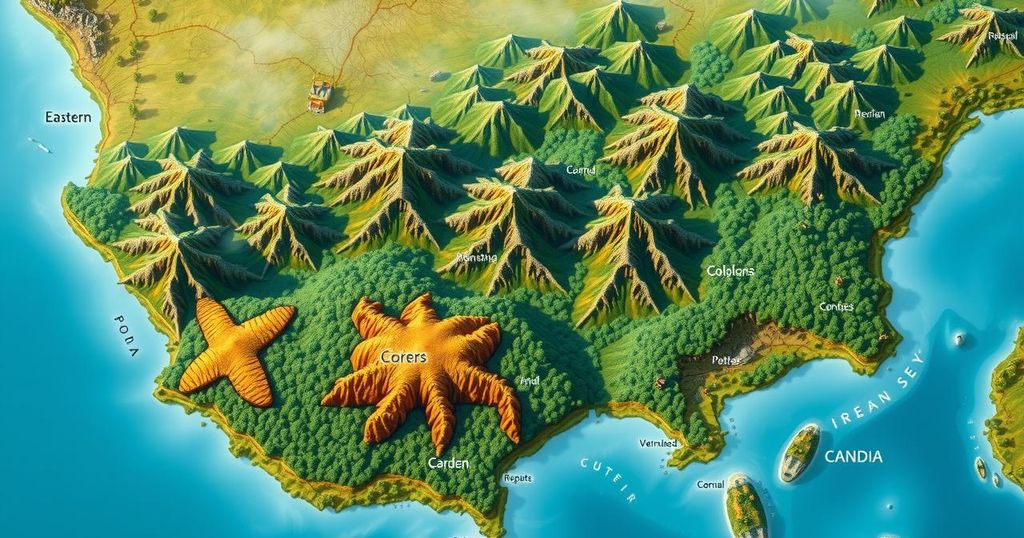The conflict in eastern Congo has intensified as Rwanda-backed M23 insurgents seize major cities, creating a humanitarian crisis and highlighting deep-rooted ethnic and economic issues. The complexities of the conflict encompass resource exploitation and inadequate political frameworks, with lasting peace remaining elusive.
The resurgence of Rwanda-supported insurgents in eastern Congo has reawakened a prolonged conflict, rooted in ethnic tensions, resource disputes, and political representation. This issue was recently analyzed in an episode of “The President’s Inbox,” featuring Jim Lindsay and Mvemba Phezo Dizolele, a senior fellow at the Center for Strategic and International Studies.
The M23 rebel group has captured Goma and Bukavu, leading to an escalating humanitarian crisis in the region. Rwanda, supporting the Tutsi M23 faction, reportedly has 3,000 to 4,000 troops engaged in military actions against both the Congolese government and the Democratic Forces for the Liberation of Rwanda (FDLR). Since the start of this year, the conflict has resulted in 7,000 fatalities and displaced over 600,000 individuals, with the threat of famine looming for many others.
The conflict is driven by more than just ethnic issues; financial interests significantly influence the fighting. The mineral wealth of eastern Congo, rich in cobalt, coltan, and copper, plays a substantial role. Rwanda has faced accusations of exploiting Congo’s resources for economic gain, further complicating the situation. Recent agreements, such as the European Union’s mineral trade deal with Rwanda, are under scrutiny due to concerns about the sources of these minerals, which may be linked to the conflict.
A political solution or increased military action is unlikely to resolve this ongoing struggle. The Congolese government remains weak and has failed to address various internal challenges, complicating the situation. Furthermore, international peacekeeping efforts have been insufficient in curbing M23’s resurgence. Mvemba points out that M23, primarily viewed as a Tutsi and Rwanda-aligned entity, lacks domestic allies, making significant military triumphs less probable this time around, despite the presence of over one hundred armed groups in the region.
In summary, the conflict in eastern Congo is a complex interplay of ethnic strife, resource exploitation, and inadequate political solutions. The resurgence of the M23 rebel group, aided by Rwanda, has exacerbated humanitarian crises, while the region’s mineral wealth continues to attract external interests. Adequate international involvement and a profound understanding of the local dynamics are essential for any prospects of lasting peace.
Original Source: www.cfr.org




